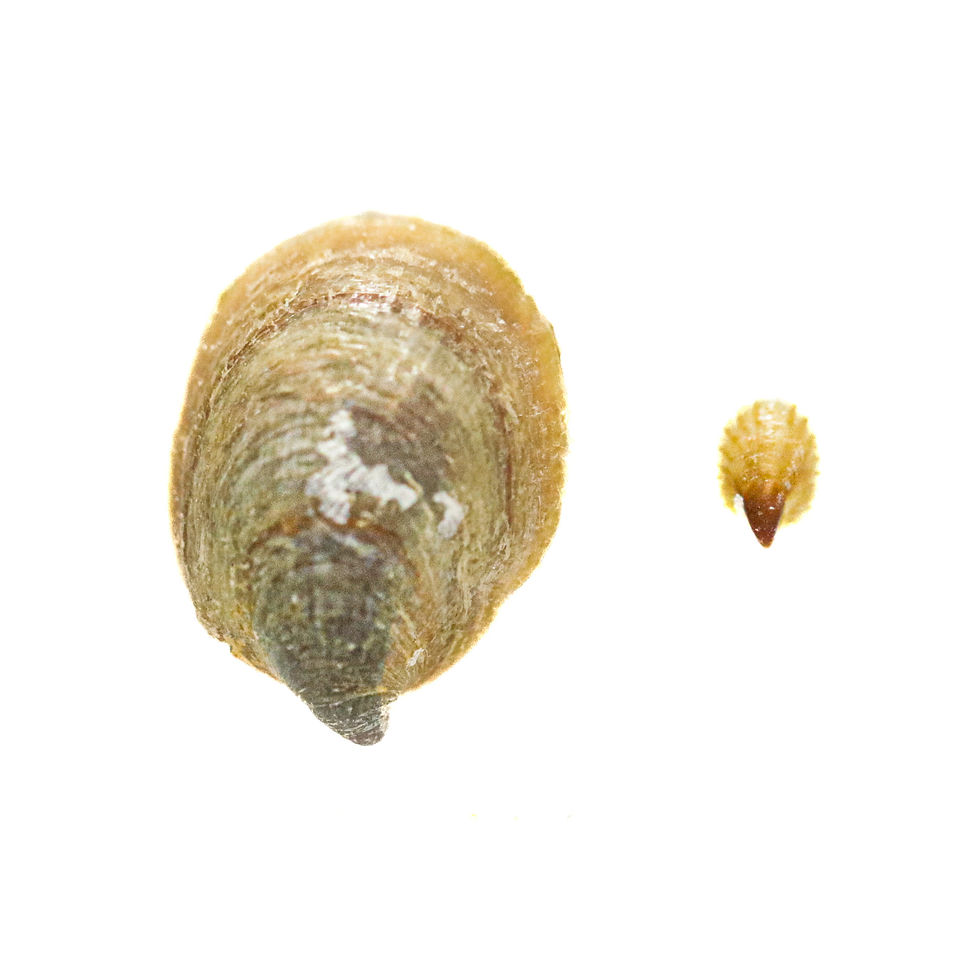Let’s face it, biologically speaking, the sexual and reproductive life of mammals is rather boring in comparison to the diversity encountered in other groups of organisms. For instance, hermaphroditism encountered in many other groups of animals and plants offers more opportunities for successfully producing offspring. In this case, the individuals carry both functional female and male sexual organs, such as in our species under focus today, the sea snail 𝘊𝘳𝘦𝘱𝘪𝘥𝘶𝘭𝘢 𝘰𝘯𝘺𝘹 (Sowerby, 1824).

𝘊𝘳𝘦𝘱𝘪𝘥𝘶𝘭𝘢 𝘰𝘯𝘺𝘹, or onyx slipper snail, is a marine gastropod featured with a slipper-like shell in which the colour of the interior of the shell resembles the colour of mineral onyx. They are filter feeders, which trap phytoplankton and detritus using strings of mucus on their gills, bringing the food to their mouth. They are now found in Korea, Japan, and Hong Kong where they have been introduced. Their native range, however, spans along the East Pacific coast from southern California to Peru. It is believed that the onyx was first introduced further north to Puget Sound, Washington State (USA) through ballast water or hull fouling of naval ships. Later, and with the growth in international trade, these snails came along with ships and spread rapidly to Japan in 1968, and reached Hong Kong to be discovered in 1979, maybe arriving a few years earlier. What a long journey! In Japan, their invasion is suspected of bringing negative effects to the local molluscs where it hinders their growth potentially through two mechanisms. When 𝘊. 𝘰𝘯𝘺𝘹 grows on the native mollusks, and this will interfere with their behaviour. More than that, 𝘊. 𝘰𝘯𝘺𝘹 is a fierce competitor of native mollusks for food.

𝘊𝘳𝘦𝘱𝘪𝘥𝘶𝘭𝘢 𝘰𝘯𝘺𝘹, just like most species in the same genus, exhibits sequential hermaphroditism, which means that an organism switches from its inborn sex to the opposite sex. In 𝘊𝘳𝘦𝘱𝘪𝘥𝘶𝘭𝘢 𝘴𝘱., they first mature as male, which can be as small as 5mm in size, and then turns into female when their size is large enough. They often pile up to form stacks, which vary in number depending on the hardness of the substrate. The older and larger female always reside at the bottom, and younger, smaller males are located on the top, while individuals with changing sex locate between them. As males grow, they undergo a sex change, and the size and timing are influenced by the presence of the opposite sex. When the female is absent, the male will grow in size and develop into a female in a shorter time. On the contrary, in the presence of a female, the sex changes in males would be delayed. Male sex changes can occur at a size of 10-20 mm for solitary males and it occurs within 100 days, while sex changes occur at 25-30 mm for males which are attached to females, and it takes over 200-500 days. The process is useful in enhancing the reproductive success of the sedentary 𝘊𝘳𝘦𝘱𝘪𝘥𝘶𝘭𝘢 𝘴𝘱. in two ways: the effort of finding mates is minimized, and more eggs are produced with the increased size of organisms. How clever these little snails are!


At HKBM, we display two specimens of 𝘊𝘳𝘦𝘱𝘪𝘥𝘶𝘭𝘢 𝘰𝘯𝘺𝘹. Try to observe and guess which individuals are male or female!
Text: Alan Fok

Comments